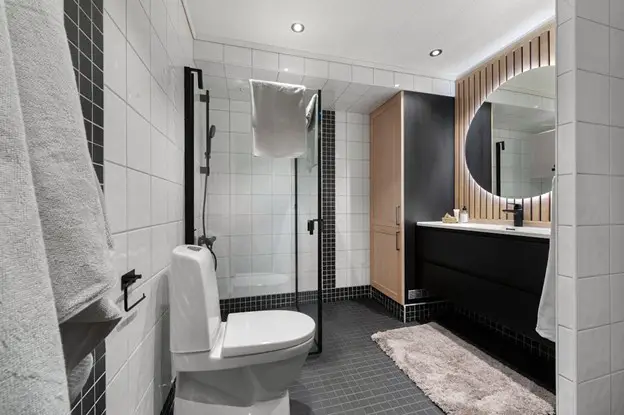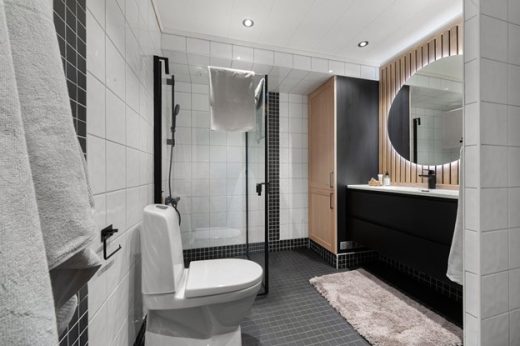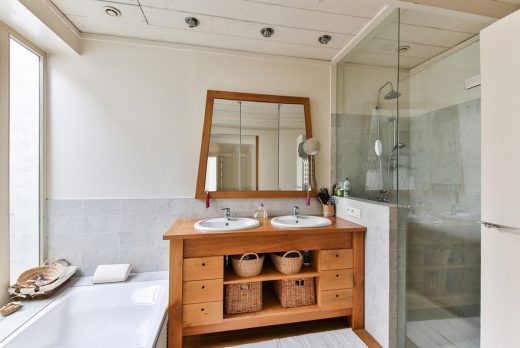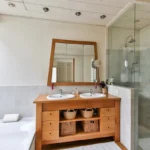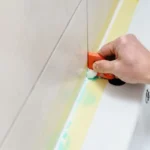How to prevent bathroom flooding guide, Property bidet installation design tips, Online home shower advice
How to Prevent Flooding in Your Bathroom
10 May 2024
The bathroom, a haven for relaxation and personal hygiene, can quickly become a disaster zone if a flood strikes. Overflowing toilets, burst pipes, and clogged drains can unleash a torrent of water, wreaking havoc on your floors, cabinets, and valuables.
The good news is that preventing these aquatic invasions doesn’t require a team of plumbers or a hefty investment. By following a proactive approach, you can transform your bathroom into a fortress against floodwaters.
The Culprits Unveiled: Understanding the Source of the Deluge
Even with top-notch toilet and bidet installations, leakages and flooding are still possible. Before we delve into preventative measures, let’s identify the common culprits behind bathroom floods.
The most frequent offender is the dreaded clog. Hair, soap scum, and other debris accumulate insidiously in drains, acting as a dam that restricts water flow. When the sink, tub, or shower overflows, the result is a puddle disaster on your bathroom floor.
Another potential source of mayhem is the overflowing toilet. This scenario can unfold due to a clog caused by flushing inappropriate materials like diapers or wipes or a malfunctioning toilet flapper, the component responsible for regulating water flow into the bowl.
While less frequent, burst pipes pose a more serious threat. These unexpected geysers can erupt due to freezing temperatures, excessive water pressure within the plumbing system, or corrosion that weakens the pipes over time. The sudden release of a large volume of water can cause significant flooding.
Strategies for a Watertight Bathroom
Now that we’ve identified the potential problems, here are effective strategies to keep them at bay.
Avoiding the Blockage
Prevention is key when it comes to drain clogs. Hence, develop a regular drain cleaning routine. You can invest in a drain snake, which is a long, flexible cable that can be inserted into the drain to snag and remove hair and debris.
Alternatively, baking soda and vinegar can be your eco-friendly friends. Pour baking soda down the drain, followed by vinegar. The resulting fizz helps break down and loosen clogs. However, to prevent clogs in the first place, regularly use a drain guard in the shower, and the sink traps hair before it enters the drain system.
Ensuring Proper Toilet Flow
To prevent overflowing toilets, it’s important to be vigilant and disciplined. Only flush toilet paper and human waste. Refrain from disposing of hygiene products, wipes, or other foreign objects that can clog the system.
Moreover, invest in a high-quality toilet flapper. This crucial component ensures a proper seal and regulates water flow into the bowl. A faulty flapper can lead to continuous refilling and potential overflow. So, if you suspect a malfunctioning flapper, replacing it is a relatively inexpensive and straightforward task.
Protect Your Pipes Against Pressure and Cold
Protecting your pipes from the elements is crucial. During winter, insulate exposed pipes, particularly those located in crawl spaces or exterior walls. This helps prevent them from freezing and bursting.
Additionally, regularly inspect your pipes for signs of wear and tear, such as rust or cracks. Contact a licensed plumber for prompt repairs if you notice any suspicious areas. You can also consider installing a pressure relief valve on your water main. This safety device releases excess pressure within the plumbing system, lessening the risk of sudden pipe bursts.
Cultivate Awareness
Simple yet effective practices can go a long way in preventing floods. Never leave the faucet running unattended while filling the sink or tub. Moreover, develop a habit of double-checking that the sink stopper is secure before filling the basin. When using the bathtub, keep an eye on the water level and avoid overfilling it.
Early Detection is Key: Spotting the Signs Before the Deluge
While prevention is paramount, early detection can minimise damage if a flood occurs. Here are some signs to watch out for:
- Slow Drain: A slow drain is a telltale sign of a potential clog. Address it promptly to avoid a future overflow.
- Unexplained Puddles: Unexplained water on the bathroom floor can indicate a leak or a hidden clog.
- Random Hissing: Hissing sounds emanating from the pipes can indicate a leak under pressure.
- The Unexplained Bulge: If you notice a bulge or soft spot on the wall or ceiling, it could be a sign of water damage from a hidden leak.
How to prevent bathroom flooding – Final Words
Through the proactive approach mentioned above, you can significantly reduce the risk of a bathroom flood. Regular drain cleaning, proper toilet maintenance, and vigilance against pipe issues form the foundation of your flood defence system. Additionally, simple practices like monitoring water levels and avoiding human error strengthen defences.
Remember, early detection is key. Awareness of potential problems allows you to address them before they escalate into a problem that’s harder to fix—in this case, a flood. With a little effort and awareness, you can transform your bathroom into a haven of relaxation, free from the risks of flooding.
Comments on this guide to How to prevent bathroom flooding article are welcome.
Bathroom Design
Home Showers
How to seal a shower enclosure
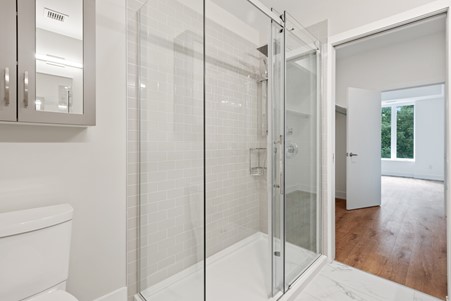
Shower cubicles for small bathroom
The Best Showers and Where to Buy Them
Why Does the Shower Curtain Move Toward the Water?
Bathroom Articles
Design Ideas for a Small Bathroom Renovation
Innovative design trends in bathroom renovations
Building Articles
Residential Property Posts
Comments / photos for the How to prevent bathroom flooding guide advice page welcome

